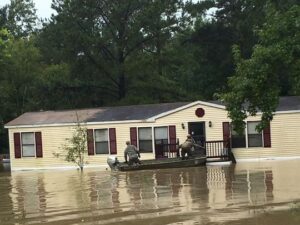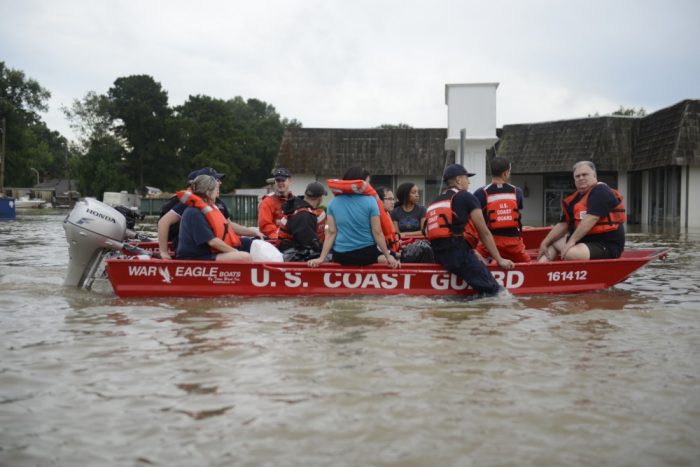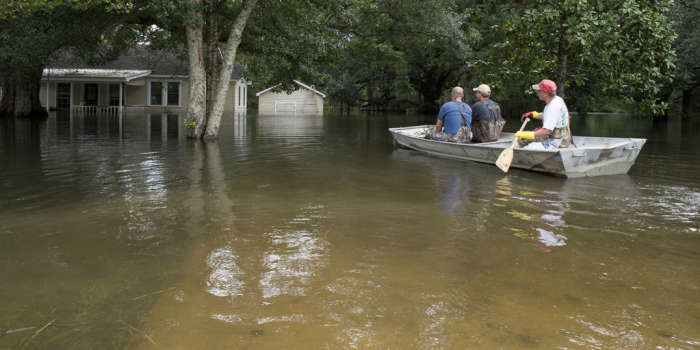Floods Do Not Flatter

It is raining in Nashville, the kind of lazy grey day that makes me want to scoop up my kids, lounge on the couch and eat freshly popped popcorn. My grass will be greener tomorrow, the pollen will have settled, and the sun will most assuredly be shining. Kids are jumping in puddles, the birds are happy, and my neighborhood is thrilled to get some needed rain.
 The reality of 20 affected parishes across Louisiana is not remotely as idyllic as what I have just described. A storm system described by the National Weather Service as an Inland Tropical Depression dropped more than 20 inches of rain across between August 11 and 13 in Louisiana and became one of the largest disasters in the United States since Hurricane Sandy. U.S. governmental officials are calling this the largest disaster since Superstorm Sandy and Louisiana officials consider this the worst disaster since Hurricane Katrina hit the Gulf in 20015. The situation is dire—over 110,00 homes have been affected (this number will surely go up); FEMA claims will top 100,000 (this number will surely go up), and 13 people are confirmed dead (this number will surely go up).
The reality of 20 affected parishes across Louisiana is not remotely as idyllic as what I have just described. A storm system described by the National Weather Service as an Inland Tropical Depression dropped more than 20 inches of rain across between August 11 and 13 in Louisiana and became one of the largest disasters in the United States since Hurricane Sandy. U.S. governmental officials are calling this the largest disaster since Superstorm Sandy and Louisiana officials consider this the worst disaster since Hurricane Katrina hit the Gulf in 20015. The situation is dire—over 110,00 homes have been affected (this number will surely go up); FEMA claims will top 100,000 (this number will surely go up), and 13 people are confirmed dead (this number will surely go up).
The National VOAD community, with whom the Center for Disaster Philanthropy partners closely, has seen its membership devastated by this disaster as well. We know that the floods have damaged more than 60 facilities in the Southern Baptist community and numerous church homes have been damaged. The Salvation Army was able to move its vehicles and equipment to higher ground, but its facility is badly flooded. The United Methodist Church is reporting damage to at least six of its churches. The Baton Rouge Food Bank is completely flooded, and currently moving to a new facility so as to serve both its regular clients as well as meet the surge of needs resulting from the floods. These facilities – homes, churches, and warehouse facilities represent critical infrastructure when it comes to all phases of a disaster recovery. They house and feed disaster volunteers, serve as meeting space for community meetings, and serve as the social service infrastructure for Baton Rouge (before the disaster and even more so now). The damage and loss that I have described above is horrifying, and only scratches the surface of the totality of infrastructure loss across the flooded region.
While FEMA and the U.S. federal government are of critical importance to meeting the short and long-term needs that have arisen as a result of the flooding, private philanthropy – community foundations, corporate foundations, small family foundations, large family foundations, and institutional foundations – absolutely must play a part in the recovery and reconstruction process. Each of these organizations must use their philanthropic resources (human, financial, and technical) in a manner that promotes effective long-term recovery.
Here are some suggestions for how to move grant dollars to best support current and future needs:
- Help fill gaps between insurance payouts and actual costs for those in affected communities. Most homeowner’s insurance doesn’t cover against flooding, and flood insurance may not cover all costs incurred.
- Support NGOs already working in Louisiana. Whether nationally or internationally, seek out the organizations with long-standing relationships in place, in addition to those who understand unique cultural, geographical, and operational differences.
- Fund remediation of mold in disaster-affected areas. Mold continues to be a widespread concern, even now, for example, for those hit by Hurricane Sandy.
- Help provide case managers and conveners for community meetings interested in increasing resiliency across the Gulf Coast. Doing this helps to eliminate confusion and disagreements among those deciding whether to return flood damaged areas to “the way they were” prior to the incident.
A final suggestion rests with the Center for Disaster Philanthropy itself. We have activated our Gulf Coast Resilience and Innovation Fund and hope you will consider allocating resources to the Fund. We know that schools, homes, and community infrastructure will suffer tremendous damage; families and individuals will be displaced from their homes longer than anticipated; and the lives and livelihoods of our fellow citizens will be impacted for many months to come. And we know that non-governmental organizations working to answer the call will require tremendous additional support to work in disaster affected communities.
As the rain continues to fall out my front door, I continue to think of my friends and colleagues in Louisiana who are working tirelessly to keep the waters at bay. And in an effort to take action, we at CDP will work to ensure that critical resources are available for flood assistance today, tomorrow, and in years to come.
More like this

Responding to Louisiana Floods

